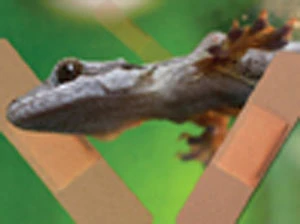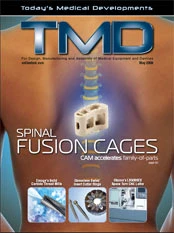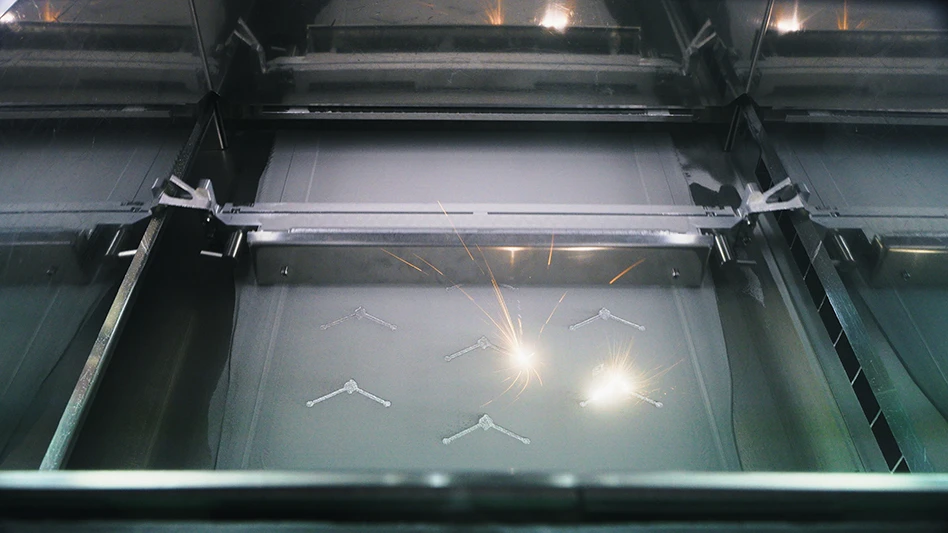
Who would have ever thought that Geckos would inspire MIT researchers and colleagues to create waterproof adhesive bandages? Well, they have. More specifically, the nanoscale hills and valleys that allow them to cling to walls and ceilings have been the inspiration.
This creative team is led by MIT Institute Professor Robert Langer, and Jeff Karp, an instructor of medicine at Brigham and Women's Hospital and Harvard Medical School. I was talking to Jeff Karp about this new concept, and he told me, "There is a big need for a tape-based medical adhesive." He went into a little more detail, saying that a surgical adhesive tape made from this new material could wrap around and reseal the intestine after the removal of a diseased segment, or after a gastric bypass procedure.

Gecko feet are a worthy model for this new adhesive; lizards happen to be masters of adhesion. "They have hundreds of thousands of hairs on the surface of their feet, and then on each one of those hairs they have these tiny nanopillars. The nanopillars are one hundredth as thick as our hair and have an enormous amount of contact surface, providing remarkably strong adhesion," says Karp.
If you are like me, this whole idea seems brand new, but it's not. I did my research and found out that gecko-like adhesives have been around since about 2001. Given the strict design criteria, there have been significant challenges to adapting this technology for medical applications. To be used in our bodies, they must be adapted to stick in a wet environment, and they need to be constructed from materials that are specifically customized for medical applications. Such material must be biocompatible, not causing inflammation; biodegradable, dissolving over time without producing toxins; and elastic, conforming to and stretching with the body's tissues.
The MIT researchers met these requirements by building their medical adhesive with a "biorubber." Using micropatterning technology the researchers shaped the biorubber into different hill and valley profiles at nanoscale dimensions. After they tested them on intestinal pig tissue, they chose the stickiest profile. This super sticky profile had pillars spaced just wide enough to grip and interlock with the underlying tissue.
When tested against the pig tissue samples, the nanopatterned adhesive bonds were twice as strong as unpatterned adhesives. The adhesive was then tested on living rats; the glue-coated, nanopatterned adhesive showed more than 100% increase compared to the same material without the glue. Perhaps more importantly, the rats showed only a mild inflammatory response to the adhesive.
The possibilities for this new adhesive seem endless. It could be infused with drugs designed to release as the biorubber degrades. The elasticity and degradation rate of the biorubber are tunable, as is the pillared landscape, meaning that the new adhesives can be customized to have the right elasticity resilience and grip for different medical applications. It seems to me, this gecko-inspired adhesive makes is perfectly okay to be stuck in a sticky situation.

Explore the May 2008 Issue
Check out more from this issue and find your next story to read.
Latest from Today's Medical Developments
- HERMES AWARD 2025 – Jury nominates three tech innovations
- Vision Engineering’s EVO Cam HALO
- How to Reduce First Article Inspection Creation Time by 70% to 90% with DISCUS Software
- FANUC America launches new robot tutorial website for all
- Murata Machinery USA’s MT1065EX twin-spindle, CNC turning center
- #40 - Lunch & Learn with Fagor Automation
- Kistler offers service for piezoelectric force sensors and measuring chains
- Creaform’s Pro version of Scan-to-CAD Application Module





